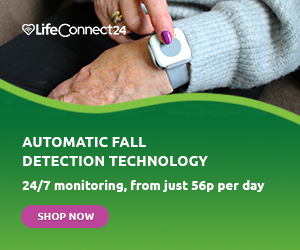This article was contributed by Chris Smith of Spenditlikebeckham
How many times were you scolded for slouching in your youth? You can probably hear the echoes of your parents or teachers ordering you to ‘sit up straight’. However, as we age we often forget the importance of good posture.
Poor posture is common in later life. Due to loss of muscle tissue and bone mass, many older people suffer from back pain, stooped posture, and osteoporosis.
But this doesn’t mean you should just accept this part of life. Thankfully there are several ways to maintain good posture while you age.
1. Sit Tall
Channel that nagging from your teachers or family members. Let it remind you to sit up straight and stop hunching.
Many of us spend countless hours stuck in front of a desk and, with every minute that passes, the temptation to slouch grows. To combat this urge, ensure your desk is set up correctly. Your wrists and forearms should be parallel to the floor with your feet planted flat. Your computer screen should be at eye level to avoid hunching forward.
This advice is also true when it comes to driving. Spine support when driving is just as important as when at a desk. For the best driving posture, make sure your legs aren’t over-stretched and you’re not hunched over the wheel.
2. Get Moving
It’s not healthy to sit in the same position for a prolonged period of time. You should aim to get up and move around at least once every 30 minutes.
This doesn’t mean you should do a workout or go on a marathon every 30 minutes. Simply getting up will help. Take a wander to the window, make yourself a cup of tea, or just stand for a moment.
Plus, making time to get up and move around will keep the importance of good posture in your mind. When you return to your seated position, you’ll check in with your body, ensuring you’re sitting tall.
3. Stretch More
Daily stretching will significantly improve your posture. Plus, it feels good.
One exercise you can do is called ‘snow angels’ or a ‘V and W stretch’. You can complete this exercise lying down or standing straight against the wall. Once your back is pressed against the surface with no gaps, place your arms above your head in a ‘V’ shape. Slowly move your hands down to your shoulders, bending at the elbows, to make a ‘W’ shape. You should feel a nice stretch along your shoulder blades.
Another stretch to try is rolling up a towel and placing it between your shoulder blades and along your spine. Lie straight and allow your spine to relax into the towel. You should feel a nice stretch in this position.
4. Work Out
A common condition amongst over-50s is osteoporosis. This condition causes bones to become weak over time. Breaks and fractures become more likely as the bones become brittle.
To prevent this condition, which could impact good posture, it’s recommended to build muscle and bone strength. One way to do this is to do various strength training or high-impact exercises. Strength training – also called resistance training – includes lifting weights, elastic exercise bands, and weight machines. High-impact exercise includes brisk walking or jogging, sports, step aerobics, and dance.
But if you already have osteoporosis or bone density problems, make sure you get help from a trainer or doctor before doing any new exercise. The last thing you want is to make your condition worse by injuring yourself.
5. Practice Yoga
In addition to bone density, building your back and core muscles is encouraged too. By doing so, you’re building up the main support structure of your body. This, in turn, helps to promote good posture.
A great way to support these areas is to practice yoga. Yoga increases the strength and flexibility of your body. Plus, it usually gives you a good stretch while you’re at it.
Yoga can also be adjusted to suit everyone. It doesn’t matter how fit you are or what your flexibility level is.
6. Eat More Calcium
Everyone knows calcium is vital for bone health. What people don’t know is that you should be increasing your calcium intake after 50 years old.
The reason for this increase is that bone deterioration accelerates during middle age. Plus, to make matter worse, older bodies struggle to maintain a healthy calcium balance. These can contribute to a loss of good posture.
Therefore, eating a healthy, calcium-rich diet is encouraged. It’s common knowledge that calcium can be found in milk, cheese, and yoghurt. But did you know that you can also find calcium in leafy greens, beans, lentils, and celery, and even some seeds such as poppy and sesame?
7. Up Your Vitamin D Intake
Calcium isn’t the only good thing for your bones – vitamin D is also vital. This vitamin is essential for maintaining bone health while also helping your muscle strength.
You can naturally boost your vitamin D while sitting in the sun. Spending short amounts of time in the sun with your legs and arms exposed will boost your vitamin D levels. But remember, don’t spend too long in the sun without sun protection as this can increase your risk of skin cancer.
However, the sun isn’t always around to lend a helping hand. Thankfully, vitamin D can be found in food too. Try eating more fatty fish such as salmon, tuna, and sardines, egg yolks, and mushrooms.
Why is Good Posture Important?
But why did your parents and teachers make such a big deal about good posture? Just a few include:
- Makes you look taller.
- Helps prevent back pain.
- Improves range of movement.
- Increases lung capacity (poor posture can restrict airflow into your lungs).
- Prevents spine rounding.
Lastly, and most importantly, good posture can boost self-esteem and confidence. You can’t beat that feeling of being confident in your own skin. Following these helpful tips can help you feel this way too.
LifeConnect24 Alarms
Even more important than good posture is your personal wellbeing. Staying safe at home is on everyone’s minds. In older age, especially, we can become more vulnerable to falls. One in three people aged 65 or older will have a fall during the year. For adults with conditions like osteoporosis, in particular, falls can cause serious injury. Buying a Lifeline alarm can provide additional peace of mind around the home.
Lifeline alarms ensure that help can be requested 24/7, 365 days a year. You simply press the button on your pendant to alert our Response Team. They will then inform your emergency contacts that you need help. When necessary, they will also inform the emergency services.
A Lifeline alarm allows you to live independently in your own home. Help will always be available when you need it.
To find out more about our life-saving service, give our friendly team a call on 0800 999 0400. Alternatively, fill in our contact form and a member of our team will be in touch.



Leave A Comment